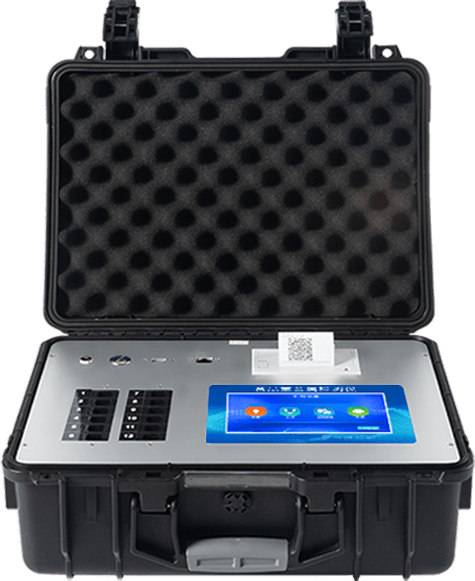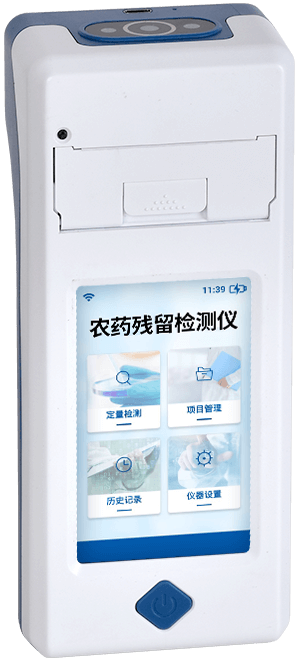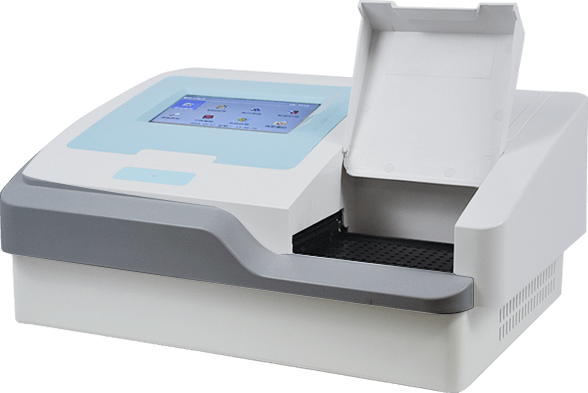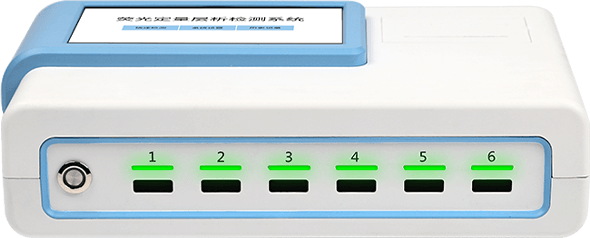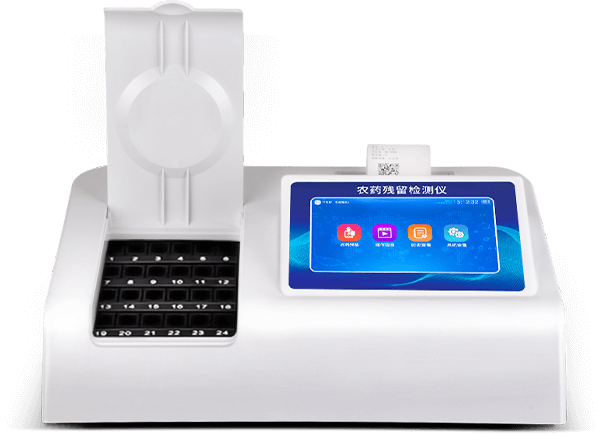
Agricultural product testing instrument
- Product Number:LD-NC24
- Product Difference:24 detection channels, simultaneously testing multiple samples, intelligent operating system, automatically determining whether the samples are qualified
Product Introduction
Testing Standards: Designed in accordance with national standard methods (GB/T5009.199-2003), as well as the pesticide residue testing standards of the World Health Organization (WHO), the Food and Agriculture Organization (FAO), and the reference intake levels of the Environmental Protection Agency (EPA). The enzyme inhibition rate colorimetric method is employed for the rapid and accurate detection of organophosphorus and carbamate pesticides in agricultural products such as fruits and vegetables.
Agricultural product testing instruments are widely used for the rapid detection of organophosphorus and carbamate pesticide residues in food products such as vegetables, fruits, tea, grains, and agricultural by-products. Additionally, they can be used for on-site testing at fruit, vegetable, and tea production bases, agricultural wholesale markets, restaurants, schools, canteens, and for safety testing before fruit and vegetable processing in households.
The agricultural product testing instrument can be equipped with a voice-guided function for user-friendly operation, has a built-in heating function, and can be configured with a high-capacity lithium-ion battery.
Product Features
Display mode: 7-inch high-sensitivity true-color touchscreen display with a user-friendly Chinese interface, providing intuitive and simple readings.
Both acetylcholinesterase and butyrylcholinesterase reagents can be used, meeting national standards and Ministry of Agriculture standards.
The light source uses imported ultra-high-brightness LEDs, featuring low power consumption, high precision, strong stability, controllable light sources (unused light sources can be turned off), and fast response speed.
The instrument has a menu library with over 100 vegetable names, categorized for management, and allows users to add or remove vegetable names as needed, edit vegetable names, and directly print vegetable names.
Testing channels: 24 testing channels allow simultaneous testing of multiple samples, with cyclic testing and immediate testing upon placement. Each sample is controlled by the program to operate independently, preventing mutual interference.
Intelligent operating system: The pesticide residue rapid testing instrument features a more user-friendly interface, with a multi-core processor and a clock speed of 1.88 GHz, ensuring faster operation and enhanced stability.
USB 2.0 interface design facilitates data storage and transfer, and allows direct connection to a computer for instrument control. It enables data querying, browsing, analysis, statistics, and printing.
The printer uses a serial port 5V printing interface, supporting both manual and automatic printing modes. Results are printed within three minutes, with the format including the tester's name, absorbance difference, testing time, testing institution, sample name, and result determination.
It features GPRS remote transmission functionality, allowing the insertion of a mobile phone SIM card to enable data transmission to a remote platform. It also supports Wi-Fi networking, enabling rapid data upload to a computer for data management and statistics.
Highly intelligent, the instrument includes self-diagnostic functions: it performs power-on self-tests and zero calibration, and automatically assesses repeatability.
Intelligent constant current voltage regulation, automatic light intensity calibration, and no temperature drift in the light source during prolonged continuous operation.
Uses DC 12V power supply for enhanced safety, and is equipped with a 6A lithium-ion battery charger.
Automatically determine whether samples are qualified, with more intuitive test results.
The instrument features recalibration, lock, and factory reset functions.
The instrument has self-protection functionality, allowing users to set usernames and passwords to prevent unauthorized operation.
Product parameters
| Wavelength Configuration | 410nm |
| Suppression Rate | Display Range 0%–100%, Measurement Range 0%–100%, Indicated Value Error ≤10%, Repeatability ≤5% |
| Transmittance | Accuracy ±1.5%, Repeatability ≤0.5% |
| Drift | ≤0.005 Abs/3 min |

 +86 19353291814
+86 19353291814
 +86 19353291814
+86 19353291814